In today’s fast-paced world, many people are feeling overwhelmed and exhausted. This constant pressure to keep up has led to a widespread problem known as burnout. More than tiredness and overexertion, burnout is the state of emotional, physical, and mental exhaustion. The outcome is a feeling of detachment from everything around you, hopelessness, and a structure in being unable to do the most minor task with your usual energy.
If we do not address the problem of burnout, serious consequences await us. It may affect one’s health, strain relationships, and impact performance at work. The positive side is that burnout doesn’t have to be the point of no return; with early signs and some recovery strategies, you can manage your life’s balance and avoid it from building in the future.
It will help one comprehend burnout’s causes, warning signs, and long-term effects, including ways to heal and thrive.
What is Burnout?
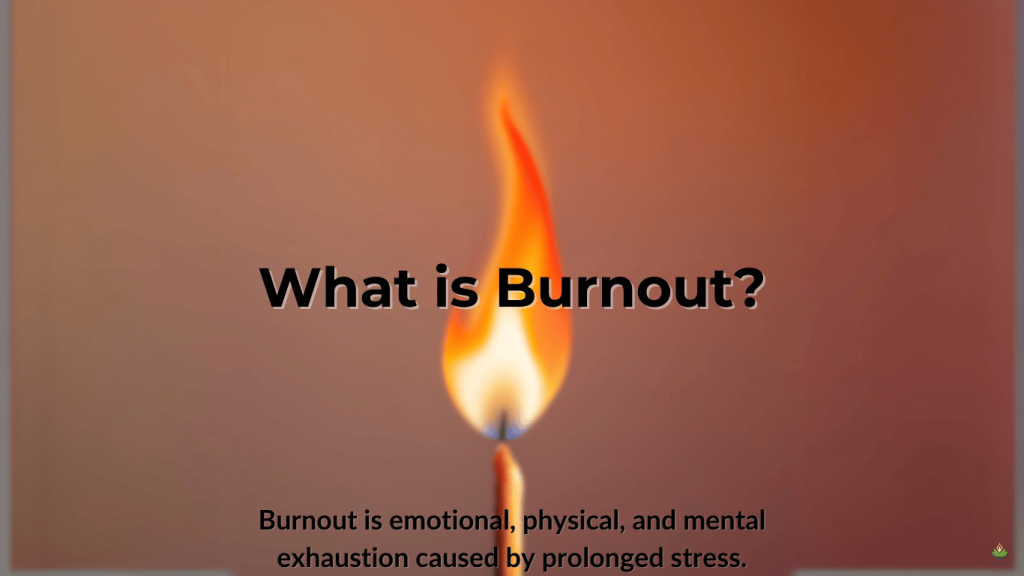
Burnout is not stress; it is when it has become too much to handle and is continuous. While stress might be temporary, which goes away right after one has won over a challenge, burnout doesn’t go away but gradually worsens with a feeling of detachment and cynicism.
Causes of Burnout
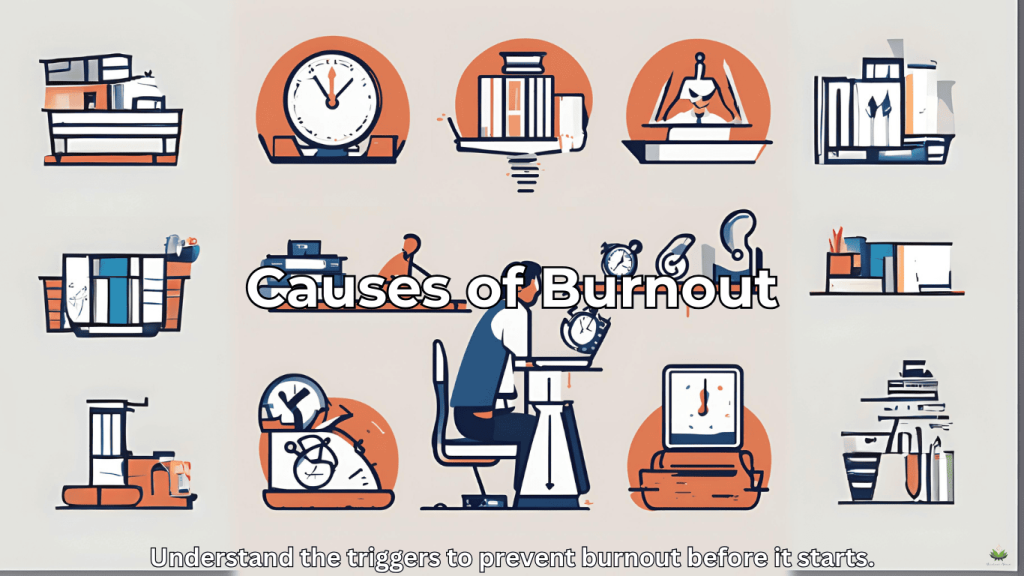
Burnout usually results from stress related to work, while excluding personal factors. Here are the most probable causes:
Workplace Demands
The major contributors are unrealistic deadlines, work overload, and rest breaks.
Example: A caregiver in the healthcare profession working relentlessly back-to-back during a crisis—the emotional toll of caring for patients with physical exhaustion—causes burnout.
Lack of Control
Feeling unempowered in decision-making or unable to affect your surroundings at work.
Example: A teacher with little say in curriculum changes may feel helpless while managing increased demands.
Unclear Expectation Setting
There is constant certainty and stress when roles and responsibilities are more defined.
Poor Work-Life Balance
Work quickly depletes your energy and happiness if you neglect personal relationships, hobbies, and self-care.
Key Insight:
WHO indicates that almost 30 percent of professionals worldwide report symptoms of burnout, and workplace stressors remain the leading cause.
Symptoms and Signs of Burnout
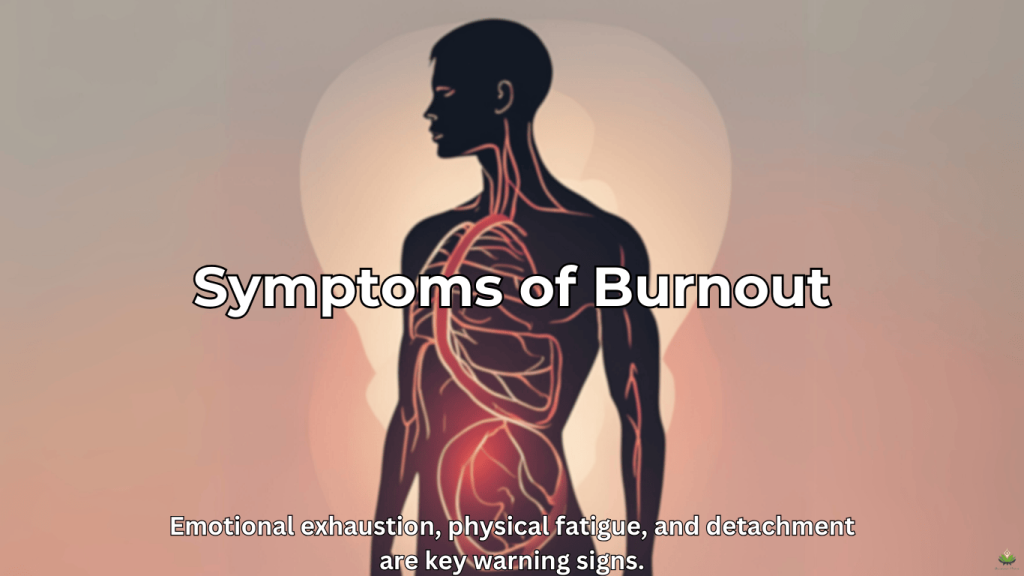
Burnout may be sneaky, often only noticeable once it is overwhelming. Here are the most common symptoms to watch for:
Emotional Exhaustion
- Feeling exhausted and anxious, even after a whole night’s sleep.
- Feeling hopeless, especially when thinking about starting a new day.
- You might feel less happy about activities you used to enjoy, such as hobbies or hanging out with friends.
Example:
Please think of the enthusiastic entrepreneur who has lost all passion for his business and avoids discussing anything related to work.
Physical Fatigue
- Feeling very tired even after a good night’s sleep.
- You may get sick more often with colds, the flu, or other illnesses because your body’s defense system isn’t working.
- Experiencing tightness in your muscles, having headaches often, or having stomach issues.
If you notice these signs, it is essential to consult a doctor to rule out other health problems.
Psychological Detachment
- Feeling uninterested in your job, personal connections, or everyday activities.
- Trouble concentrating, making decisions, or remembering things clearly.
- Cultivating a pessimistic or uncertain viewpoint, thinking that your contributions are insignificant.
Decreased Performance
Many people are in a position where they need assistance to complete their tasks on time, which may lead to missed deadlines. Such situations always result in declining creativity, motivation, and solving problems effectively. When someone avoids their responsibilities, it can create a cycle of procrastination and guilt, making it even harder to get back on track.
Are you getting feedback on deteriorating work quality or overshot deadlines? Sometimes, this may be an indication of burnout, which affects productivity.
Long-Term Effects of Burnout
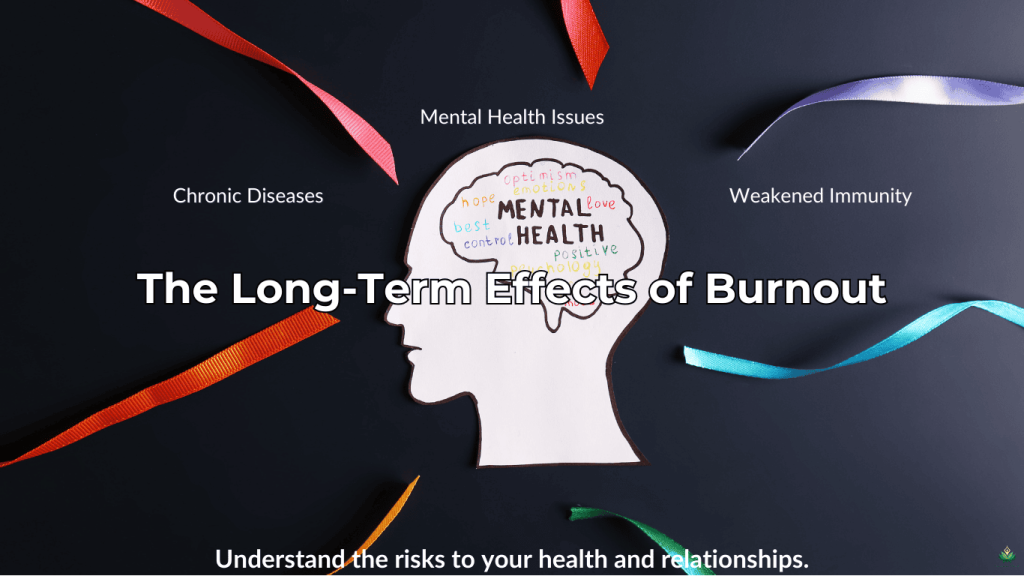
Burnout affects daily life and can have profound, long-lasting implications for health, relationships, and careers.
Health Risks
- Chronic Diseases: Long-term stress increases vulnerability to conditions like hypertension, diabetes, and autoimmune diseases.
- Mental Health Issues: Strong links exist between burnout, depression, anxiety, and feelings of insignificance.
- Weakened Immunity: Chronic fatigue makes The body very prone to infections.
Case Study:
A study by authors affiliated with Frontiers in Psychology reported that burned-out workers also took time off on paid sick leave and left organizational jobs.
Strain in Relationships
- Burnout manifests in various ways, including irritability, emotional withdrawal, and a decline in one’s ability to maintain close relationships with the people around one.
How to Recover from Burnout
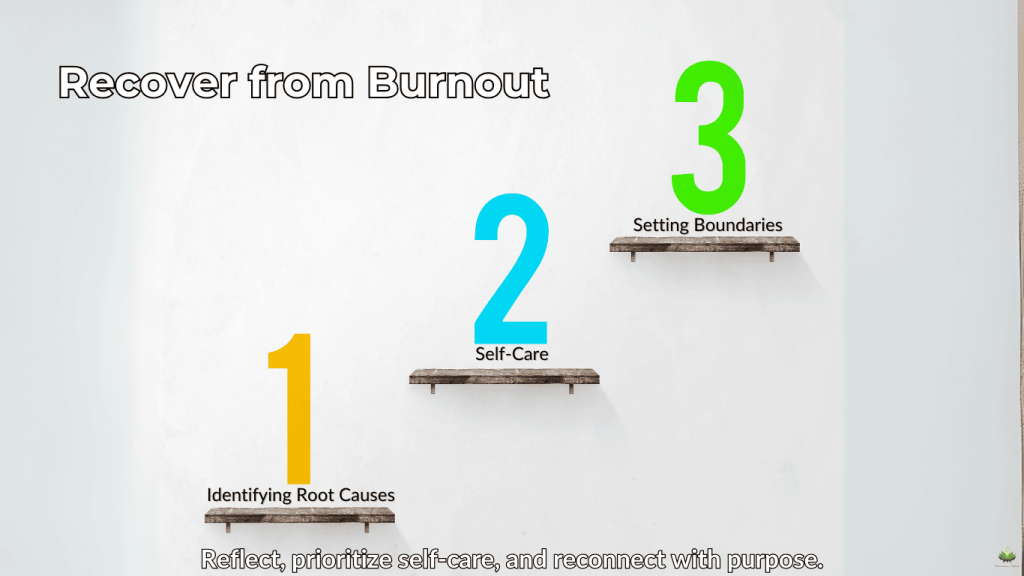
Burnout recovery is not about quick fixes but a reflective, multi-dimensional effort addressing symptoms and root causes.
Identify and Address Root Causes
Take a moment to reflect on what causes burnout, such as unrealistic deadlines, lack of support, or overcommitting.
Action Step: List your most significant stressors and brainstorm possible solutions.
Example: Share your need to renegotiate deadlines or redistribute tasks with your manager if work overwhelms you.
Prioritize Self-Care
Burnout often results from neglecting personal needs. Recovery begins with:
Physical Health
- Sleep: Get at least 7–8 hours of restorative sleep every night.
- Nutrition: Consume fruits, vegetables, lean proteins, and healthy fats from nuts and avocados.
- Exercise: Regular exercise releases endorphins and reduces tension, as simple as a 20-minute walk.
Mental Health
- Practice mindfulness through meditation, deep breathing, or journaling.
- Seek therapy or coaching to guide your recovery process.
- Use EFT (Emotional Freedom Technique) tapping to release stress responses.
Reassess Your Goals and Boundaries
Balance requires new priorities and setting boundaries.
Action Step: Identify draining activities and say “no” to unnecessary commitments.
Example: Delegate household chores or cut down on extracurricular activities to free up time for relaxation.
Reconnect with Purpose
Burnout is primarily due to losing sight of what is essential. Take back your motivation by :
Spending your time on hobbies and activities you enjoy.
- Volunteering for or working for any cause because it matches your values.
- Consider a career shift if your current role no longer aligns with your goals.
Future Prevention of Burnout

Regular Self-Check-Ins
- Reflect weekly or monthly on your energy levels and stress.
- Use mindfulness apps or mood-tracking techniques to practice self-awareness.
Build a Support Network
- Surround yourself with people who inspire and uplift you.
- Lean on friends, family, or colleagues when feeling overwhelmed.
Practice Holistic Stress Management
Incorporate stress-relieving activities like:
- Yoga or tai chi for relaxation.
- Breathing exercises like box breathing.
- Meditation or guided imagery for emotional calm.
Maintain Healthy Work-Life Balance
- Stick to work hours and prevent professional obligations from encroaching on personal time.
- Schedule leisure activities that recharge you, like hobbies or relaxation.
Key Takeaways
- Burnout is a severe condition that takes over the psychological, bodily, and emotional well-being of an individual.
- Recovery incorporates the identification of early signs, root causes, and self-care.
- Holistic practices and firm boundaries can significantly minimize the risk of burnout.
Call to Action
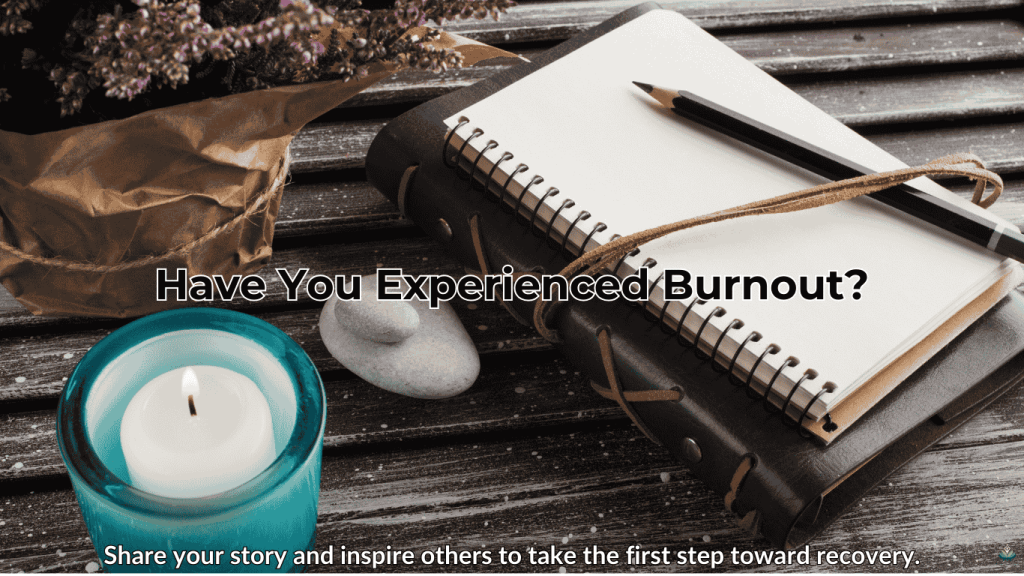
It would help if you didn’t let burnout become a part of your life. Have you ever experienced burnout? Please share your experience in the comments below—your insight might inspire others further along their journey. Follow @holisticalmetod for more tips and reliable information!
Angel Dimitrov. (2024). Holistical Method. https://holisticalmethod.com